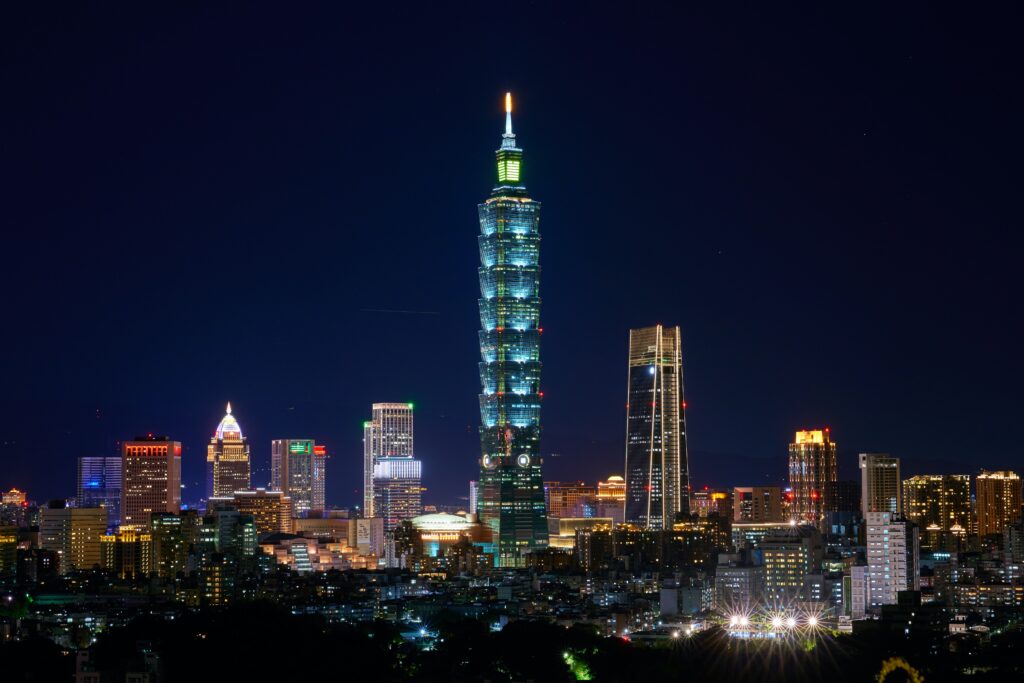

03.08.2022 – China has not attacked Taiwan. But what is not, can still become. Our urgent advice: Keep an eye on the crisis. And prepare for the unthinkable.
The Speaker of the U.S. House of Representatives, Nancy Pelosi, has shown backbone and actually visited Taipei. In doing so, she reaffirmed U.S. resolve to support a free China. Thus, the situation remains tense. Investors are still cool and assume that this time, too, threats will remain. Perhaps a good opportunity to buy the fear indicator VIX – here in the weekly chart – to hedge.

Source: Bernstein Bank Ltd.
Beijing again threatened the U.S. that it will pay a price for its policies and responded by launching large-scale maritime maneuvers. You remember Ukraine: this could quickly turn into an invasion. Some two dozen Red Chinese jets meanwhile penetrated Taiwan airspace.
A floating fortress
If Red China really attacks, it will have to put a massive armada in motion, because the losses are likely to be enormous. Taiwan is about three-quarters mountainous, with some 200 peaks over 3,000 meters. There are only 14 sandy beaches suitable for an amphibious invasion, judged Taiwan expert Ian Easton of the think tank “Project 2049” in an interview with Fox News. The terrain behind is hilly, Red Chinese troops would have to expect drumfire from above from well-fortified positions.
Taiwan is ready
There is no surprise factor at sea; Taiwan has been preparing for an invasion since the 1950s. Moreover, the two Taiwanese islands of Matsu and Kinmen are two strongholds just off the Red Chinese coast that would have to be eliminated first. Kitsch Liao, an analyst at Taiwanese analysis firm Doublethink Lab, added on Fox News Digital that there are always only short windows of time when the Formosa Strait is calm enough for an attack at sea. In addition, he said, logistics are difficult: ships can typically only carry three days’ worth of material – meaning they would have to commute back to the mainland in the event of an invasion, making them an easy target.
Chip industry in focus
Because of the presumed high casualties, the U.S. called off Operation Causeway as early as 1944 in an attempt to capture Formosa from the Japanese. Perhaps Red China could destroy Taiwan with a hail of missiles – but presumably the Communists in Beijing want to conquer the island with a functioning infrastructure, first and foremost semiconductor factories. Taiwan dominates that market, according to analysis firm TrendForce, with a 61 percent global market share in high-performance chips of 16 nanometers and above. In addition, Taiwan also has missiles that could hit Beijing, for example.
Threat of war with the USA
An attack on Taiwan at sea would also likely draw U.S. carrier forces into the fray – triggering a war with the United States. Because of all these obstacles, a blockade of Taiwan could also be in the offing. You can imagine the impact on the semiconductor industry.
But who knows: Possibly Xi Jinping suffers from a God complex and attacks despite all obstacles, analyst Ian Easton further stated. We think: Beijing must do something. Already the mass murderer Mao did not care that millions died in the “Great Leap Forward” and the Cultural Revolution. If Xi backs down now, he will lose face. But the Great Chairman wants to be revered as much as Mao Tse Tung. It is possible that the current naval maneuvers are the overture to a new, major crisis – with consequences for the stock market. If Beijing backs down, the situation is likely to ease. Bernstein Bank keeps an eye on the situation for you!
Important Notes on This Publication:
The content of this publication is for general information purposes only. In this context, it is neither an individual investment recommendation or advice nor an offer to purchase or sell securities or other financial products. The content in question and all the information contained therein do not in any way replace individual investor- or investment-oriented advice. No reliable forecast or indication for the future is possible with respect to any presentation or information on the present or past performance of the relevant underlying assets. All information and data presented in this publication are based on reliable sources. However, Bernstein Bank does not guarantee that the information and data contained in this publication is up-to-date, correct and complete. Securities traded on the financial markets are subject to price fluctuations. A contract for difference (CFD) is also a financial instrument with leverage effect. Against this backdrop, CFD trading involves a high risk up to the point of total loss and may not be suitable for all investors. Therefore, make sure that you have fully understood all the correlating risks. If necessary, ask for independent advice. CFDs are complex instruments and are associated with the high risk of losing money quickly because of the leverage effect. 68% of retail investor accounts lose money trading CFD with this provider. You should consider whether you understand how CFD work and whether you can afford to take the high risk of losing your money.7
